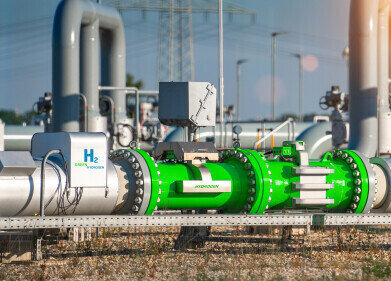Biofuel industry news
What is Custody Transfer?
Jan 10 2022
In-between initial extraction and final point of sale, it’s not unusual for oil and gas products to change hands multiple times. Custody transfer plays an important role in regulating ownership transfer processes and ensuring high-value products such as crude oil, refined petroleum and natural gas are measured with granular accuracy.
The field is also referred to as fiscal metering, though custody transfer is the more commonly used term.
Examples of custody transfer
- Transferring Canadian tar sands oil from a wellsite to a pipeline.
- Transferring West Texas Intermediate (WTI) from a pipeline to a refinery in the Gulf of Mexico.
- Transferring Saudi Arabian oil from a cargo ship to a Chinese refinery.
Every time resource change hands, custody transfer processes are used to deliver high-accuracy measurements and ensure neither party is short changed.
Measuring flow rates
Without a doubt, flow measurement is the gold-standard custody transfer technique. Depending on the application, buyers and sellers can choose to employ a range of different flow meter instruments, including the following options:
- Turbine flowmeters
- Positive displacement (PD) flowmeters
- Coriolis flowmeters
- Ultrasonic flowmeters
- Lease Automatic Custody Transfer (LACT) units
The costs of custody transfer mismeasurement
The costs of custody transfer mismeasurement can be enormous for high-value commodities such as oil and gas. For example, when an oil tanker receives 500,000 barrels of crude, even a small discrepancy of 1% could result in a significant loss for either the buyer or seller. Custody transfer systems are used to achieve the highest possible level of accuracy when resources change hands.
Meeting national and international regulations
As well as maintaining accuracy and precision, custody transfer systems help both parties meet the strict laws of both national and international authorities. These legislations are designed to maintain fair trade and ensure transactions are as transparent as possible. For example, in the United States all interstate custody transfer processes are regulated by the Federal Energy Regulatory Commission (FERC).
Other transactions may adhere to standards enforced by the International Organisation of Legal Metrology (OIML), an intergovernmental body made up of more than 120 countries and member states.
Boosting bottom lines with custody transfer systems
A recent webinar led by Eric Heilveil of Siemens Industry Inc explored the benefits of custody transfer flow measurement for the gas industry, with a focus on the potential to boost bottom lines with next-generation technologies. Heilveil introduced the SITRANS FS230, an ultra-high speed (100 Hz) clamp-on ultrasonic flow meter with minimal maintenance requirements and an extremely low cost of ownership.
For more insight into custody transfer, including the sophisticated instruments and technologies used to carry out processes, don’t miss ‘Custody Transfer in Oil and Gas: Your Questions Answered’.
Digital Edition
PIN 26.1 Feb/Mar 2025
March 2025
Analytical Instrumentation - Elemental Analysis for Quality and Process Control at Refineries, for Lubricants and Wear Metals in Engine Oils - Synthetic Lubricants: New Developments - Scaling...
View all digital editions
Events
Apr 08 2025 Birmingham, UK
Apr 08 2025 Kielce, Poland
Apr 08 2025 Ravenna, Italy
Apr 08 2025 Southampton, UK
Apr 08 2025 London, UK



















